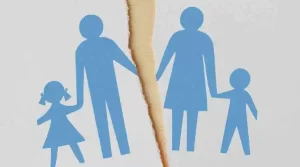Adopting a child is not the same as fostering, and it is important to understand the difference. When you adopt, you adopt a child into your family and make them a permanent family member. Adopted children are no longer foster children; they are your family members. It is more involved in the screening and training that must occur before an adopted child can be brought home.
You’ve probably heard this one before, but it’s true: the sooner you start looking into adoption, the better. The adoption process can be lengthy, and it’s best to get started as soon as possible so that you don’t run out of time.
You’ll have to consider many factors, including whether you’d like to adopt domestically or internationally; if you’re adopting domestically, are you going with a private agency or an attorney? If it’s international adoption, are you going through an agency, or will you work directly with a foreign government?
Adoption can take anywhere from 6 months to 2 years, depending on what kind of route you choose and how quickly everything moves along. The following are some tips on starting an adoption.
#1 Hiring an Adoption Advisor
This can help complete your adoption process and create legal documents for any children you already have. You’ll want to choose someone who’s experienced in adoptions; this way, they can ensure that everything goes smoothly from beginning to end.
If you are adopting a child from an orphanage, there will likely be a social worker or someone like an adoption advisor who can help you through the process.
#2 Pick a Program That's Right for You
Most private and international agencies will have online profiles of families who have adopted through them. These profiles can give you a good sense of the kinds of children each agency has helped place and what kinds of families they’re looking for. Some agencies are also more likely to place children with same-sex couples or other nontraditional families; you should consider this before committing to a program.
Status on the family law, home country’s laws, and policies regarding adoption can also be important factors in deciding which program is best for you. Some countries require couples to be married, for example, while others only accept applications from single parents who’ve been widowed. Know your country’s laws before starting the process, and if it needs to change any laws, do so as soon as possible so that your application isn’t delayed due to bureaucracy.
Your agency should also have all the information needed for you to apply for citizenship waivers or other paperwork that could expedite the process. If they don’t have this information readily available, be wary; they may not know all the steps to complete an adoption.
#3 Home Study
A home study is also required for many different adoptions, especially if you plan to adopt a child domestically. A home study is a comprehensive look into your background and family situation, including your finances, how much time you can commit to parenting, and how well you interact with children.
The idea is to make sure that your family is prepared to take care of a new baby and that they will be safe and happy in your home. This will also allow the social worker to calculate how much child support you may have to pay for the child after adoption.
You’ll also need to provide specifics about any pets in your house and your property (if there’s room for a kid to run around outside).
#4 Make a Family Profile & Outreach Materials
The family profile is a detailed biography of you and your partner, including contact information for everyone in your family and their location and living situation (including their income level), and any medical issues that might impact you. This profile also includes a list of eligible people to be considered for adoption (parents, siblings, birth grandparents, etc.)
A profile includes basic contact information so that anyone looking for an adoptive parent can reach you directly. It’s a good idea to add pictures of yourself and your partner—it’s best if they have slightly different features, but that’s up to you.
You might also include some images that reflect your interests or hobbies. The outreach materials indicate what type of adoptive parents you’d like to be seen as by potential birth families, including preferences in gender and ethnicity (if relevant) and reasons why you’d like to adopt certain children (like sibling groups).
#5 Do Your Research
The Adoption Support Fund can help you create your adoption profile, which will give you a solid foundation for improving your chances of adoption. If you’re already thinking about adopting but don’t know where to start, take advantage of the Adoption Support Fund’s free resources and guides and access to experts who can help you craft a plan for your adoption journey.
You can also take advantage of their donor-advised fund that lets donors decide where their money is most needed. The money from this fund doesn’t have to go towards the specific cause of your choice; it can be used in any area where there’s a need for assistance or where a donation would do good work.



